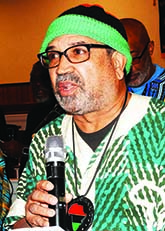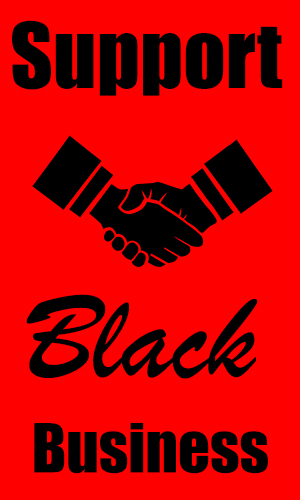
Marking 400 Years of the Afrikan Experience in America 1619-2019
By MAKHERU BRADLEY

400 years ago a group of Afrikans were captured in Angola, placed aboard a Portuguese slave ship, hijacked by British pirates and sold to British settler colonists in Virginia.
“About the latter end of August, a Dutch man of War of the burden of 160 tons arrived at Point Comfort, the Commanders name was Capt. Jope. He brought not anything but 20 and odd Negroes.” – John Rolfe (September 30, 1619)
Although John Rolfe was not specific, August 20, 1619, is the date many historians have identified as the day the “20 and Odd” arrived in Colonial Virginia.
It’s important to distinguish the “20 and Odd” from traditional English indentured servants
Those Afrikans were slaves in every sense of the word, having been captured in Angola. There were approximately 350 people crammed into a Portuguese slave ship called the San Juan Bautista. They were being transported for sale to plantation owners in Mexico. Based on the merchant records about 150 of them perished during the dreaded Middle Passage.
British pirates attacked the “Bautista” and stole 50 of those Angolans, whom they transported to Virginia aboard two ships, the White Lion carrying the first 20 and odd, and the Treasurer which arrived a few days after August 20. The Angolans were sold for food and supplies to the governor and cape merchant, who resold them to Virginia settlers in Jamestown. Some of them became indentured servants, but the terms of their servitude were rarely documented.
Unlike English indentured servants who voluntarily came to British North America due to massive unemployment, intense poverty and violence in England, or to finish serving time for criminal convictions, the Angolans who were transported to Virginia in 1619 were sold into slavery. They did not sign contracts in Afrika to work for up to seven years to gain freedom which they already had. These Afrikans were forcibly migrated to British Colonial North America.
The National Parks Service says of “surviving wills, inventories, deeds and other documents, in some instances it was considered ‘customary practice to hold some Negroes in a form of life service.’ It should be noted that by examining these documents it was also found that some Blacks were able to hold on to their status of being indentured servants, thus, eventually gaining their freedom.” What is “a form of life service” other than slavery?
The Path to Chattel Slavery
Beginning with the Bay Colony (Massachusetts) in 1641, Chattel Slavery was systematically implemented by a series of laws such as these in Virginia:
1639-All persons except Afrikans are to be with Arms and Ammunition.
1640-John Punch, a runaway indentured servant, becomes the first documented slave for life in Virginia. (Per one genealogy, President Barack Obama is the 11th great-grandson of John Punch)
1662- Slavery was recognized in the statutory law of the colony. Legislation was passed defining the status of Afrikan children with white fathers. Children would be considered the same status as the mother. If the child was born to an enslaved woman, the child would be considered a slave.
1670- Blacks or Native Americans could no longer own white indentured servants.
1680-An act was passed preventing insurrections among enslaved Afrikans. They could not congregate in large numbers for supposed funeral or feasts. They must also obtain written authorization to leave a plantation at any given time and they could not remain at another plantation longer than 4 hours.
1691- First act prohibiting intermarriage.
1692- Afrikans must give up ownership of horses, cattle or hogs. There were separate courts for the trial of enslaved people charged with a capital crime, thus depriving them of the right of a trial by jury.
1705- Slave laws were codified.
Cycles of oppression and incremental reforms
America won its war for independence against Great Britain, but via three clauses in the 1787 United States Constitution, Afrikan people were rendered noncitizens in the new republic.
With the implementation of “service for life” and Chattel Slavery came the 246 years of Afrikan struggle for freedom. The Civil War and the passage of the 13th Amendment brought an end to Chattel Slavery for all conditions except one – “Neither slavery nor involuntary servitude, except as a punishment for crime whereof the party shall have been duly convicted, shall exist within the United States, or any place subject to their jurisdiction.”
Reconstruction offered the United States a chance to become a multi-racial democracy, but it was overthrown by white supremacists operating civilian organizations like the Ku Klux Klan and the reins of state governments. American apartheid, known as Jim Crow segregation, was implemented with lynching and destructions of Black communities and entire thriving towns as common practices.
Afrikan Americans responded to this oppression by forming organizations which demanded civil rights and by launching institutions to teach their people various disciplines and skilled trades. Marcus Garvey organized a “Back to Africa” movement. These activities eventually led to the Civil Rights Movement which legally eradicated American Apartheid.
The reforms of Civil Rights led to some significant economic and political progress, which is now under assault by the current white backlash (2016-2019).
Afrikan Americans overcame the previous system of oppression and we can overcome the current white backlash. However, the real challenge is to break these repetitive cycles of oppression and reforms. That requires a mass-based struggle for real power to neutralize the capacity of the historical forces which have repeatedly imposed their diabolical will on Afrikan people in America.
For more from the author, follow his blog Makheru Speaks.

